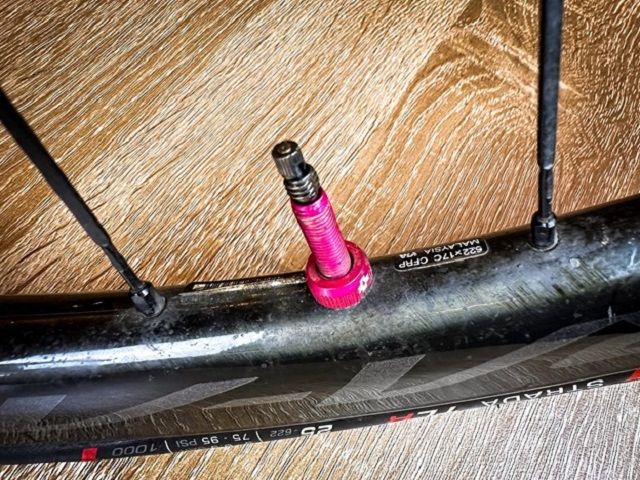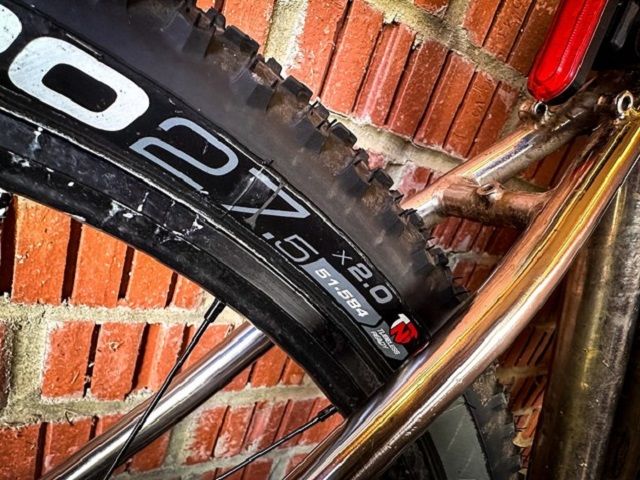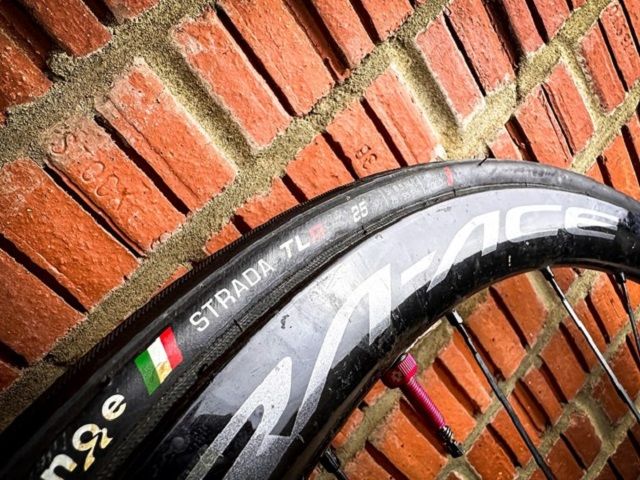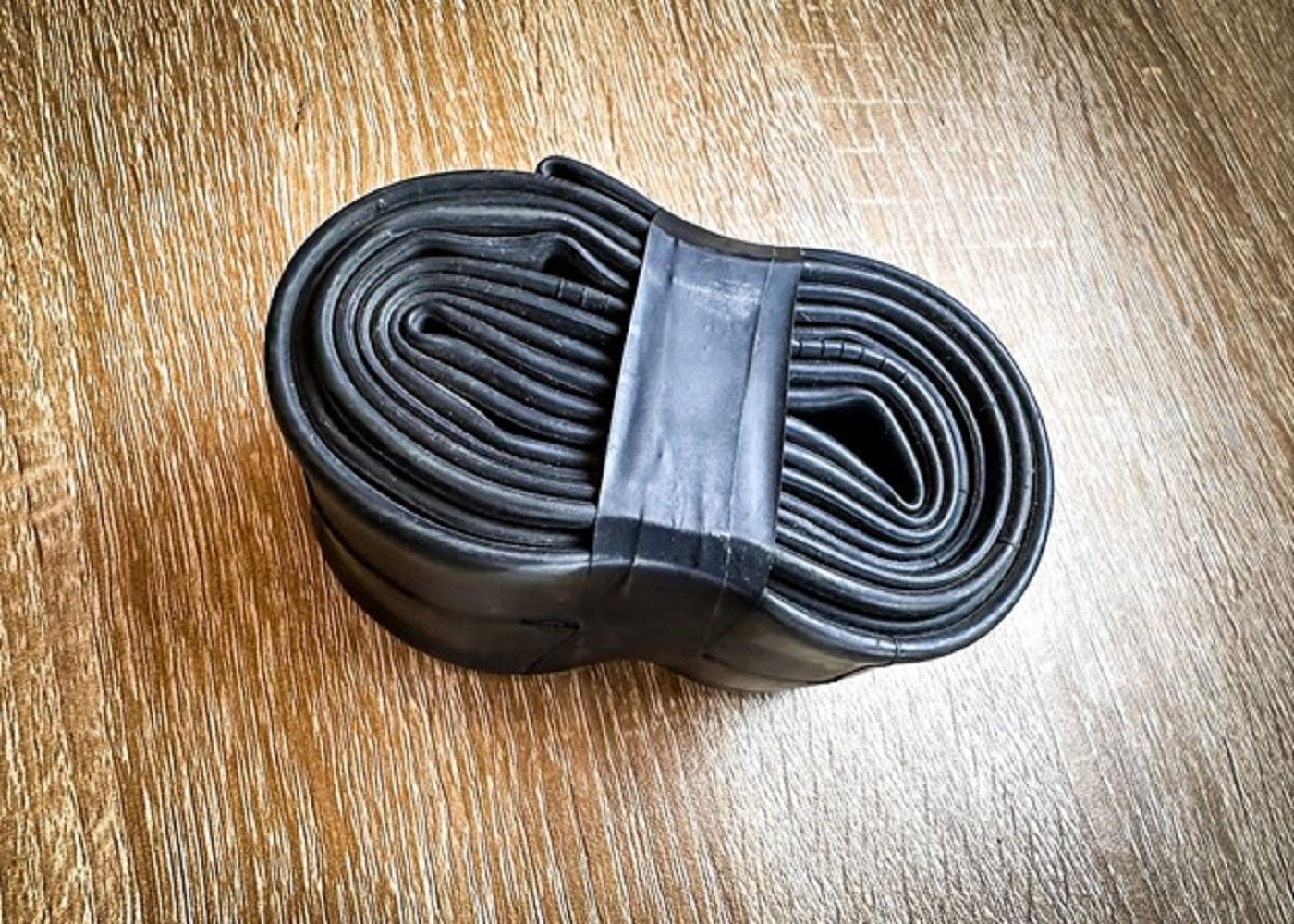Very few other sports offer the exploration opportunities and excitement that cycling can. Unlike most sports though, it does come with some extra costs, and bikes and spares are something you have to budget for. When it comes to cycling products, there are many to choose from on the market, and it’s challenging to know how much to spend on certain things.
A common question we get asked here at Cycling Hacker is how much does a bike tube cost, and what should I be paying for one? Tubes come in all shapes and sizes, and some have very impressive features. This article will break it down and tell you how to identify the tube you need and how much you should be paying.
What is a Bike Tube?
Although you probably already know the answer to the question, it’s vital to understand what a bike tube is. A bike tube, or inner tube as many call it, is an inner liner to your tire, which, when inflated, shapes the tire properly for the riding it is designed for.
What Are Bike Tubes Made of?

Typically most inner tubes are made of Butyl Rubber, but this isn’t always the case. Some bike tubes are made of other materials such as Latex and Thermoplastic Elastomer. Depending on what they are made of will give them certain characteristics, such as lightweight properties and extra puncture protection.
You will also find tubes will come with different valves, and currently, you have two different types. The Presta valve is commonly seen on road bike tubes, and the Schrader is seen on mountain bike tubes.
What Are the Different Types of Bike Tubes?

Before speaking about cost, you have to understand the general types of bike tubes as this massively affects the cost.
Standard Tubes
These are the cheapest tubes you will find on the market; typically, most bike shops will keep them. They are easy to fit and also have great protection past the tire. They are not the lightest but not the heaviest either, and you can repair these with a patch kit.
Pros
- Easy to fit
- Cheap to buy
- Available everywhere
- Good puncture protection
- Easy to repair
Cons
- Not the lightest
Slime Tubes
Slime tubes are very unique tubes and offer something that very few other tubes do. They are filled with a special slime and have the ability to self-heal when being punctured by small items. They cost a little more, are very heavy, can be messy if they don’t seal, and are very difficult to patch.
Pros
- Easy to fit
- Excellent puncture protection
Cons
- Very heavy
- Can be messy
- Hard to patch
Performance Tubes
Performance tubes are incredible and can make a big difference to the bike’s weight and the wheels rolling resistance. Putting race tubes can save you up to 250g on the bike’s wheels, making you much faster. The drawbacks are they cost a lot to buy and don’t offer the same puncture protection levels the other tubes have, and are very difficult to patch.
Pros
- Very fast
- Very lightweight
Cons
- Little puncture protection
- Very expensive
- Tough to patch
Specialist Tubes
You also have specialist tubes, and a good example of this is rare sizing, like a fat bike tube or wheelbarrow tube. These are going to be a lot more expensive because they are produced much less by companies and are much harder to source.
You will find the more popular tubes to be much cheaper because they are heavily mass-produced, so 700c road tubes and 29” mountain bike tubes come in very cheap because there’s a huge demand for them on the market currently.
How Much Does an Inner Tube Cost?
So how much do tubes cost? Here’s our rough guide on what you can expect to pay for different types of tubes currently on the market.
| Type of Tube | Road Bike (23c to 28c) Presta | Mountain Bike (2” to 3”) Schrader | Gravel Bike (35c to 48c) Presta | Hybrid Bike (30c to 45c) Schrader | Specialist Tubes |
| Standard | $4 | $5 | $6 | $4 | $10 – $15 |
| Slime | $10 | $12 | $12 | $8 | $15 – $20 |
| Performance | $40 | $35 | $35 | $35 | N/A |
How to Tell Which Tube You Need?

If you’re struggling to find the right tube for you, there’s a very easy way to find out. Most people try to find out what inner tubes they need by researching the bike when the key is to look at the tire. The tire will have the information you need, and you will be looking for either of these.
Tire and wheel size
On a road bike, you will be looking for a size, which will be a number followed by “C” for example, 28C. Then you will be looking for a wheel size that will be 700c or 650b. On a mountain bike, you will look for size in inches, such as 2.1”, and a wheel size which will typically be 26”, 27.5”, or 29”.
Tire Code
If you struggle to find the information above, you can also look for the tire code. It will look a little like this 28-622. The 28 refers to the tire’s width, and the 622 is the wheel diameter which would be 700c.
Related: How much does it cost to replace a bike tire?
Conclusion
Bike inner tubes can be very cheap or very expensive. Unless you’re racing, we recommend just going for standard tubes as they are just excellent value for money, and always double check the size before you hit buy it now.
